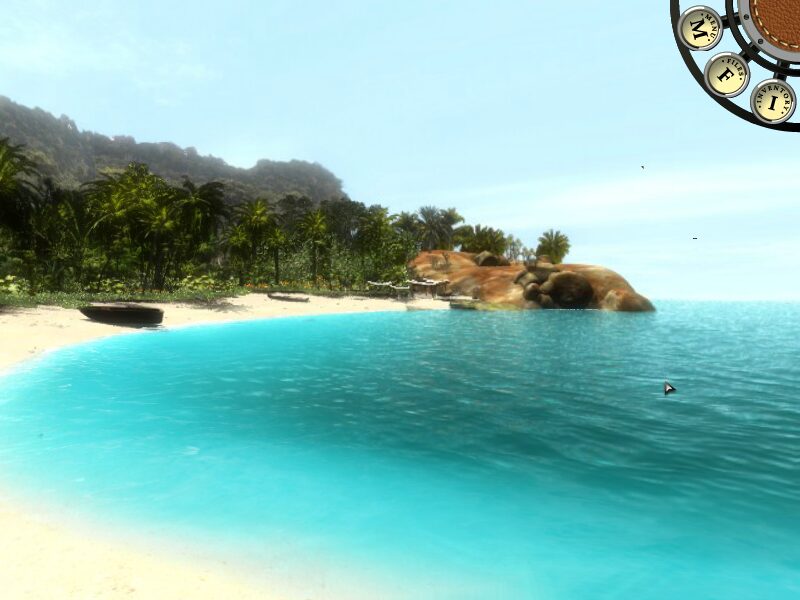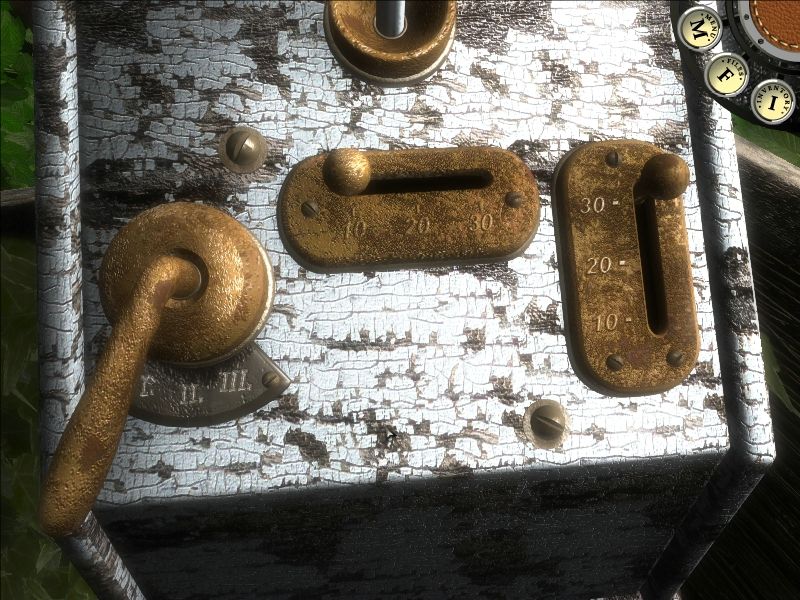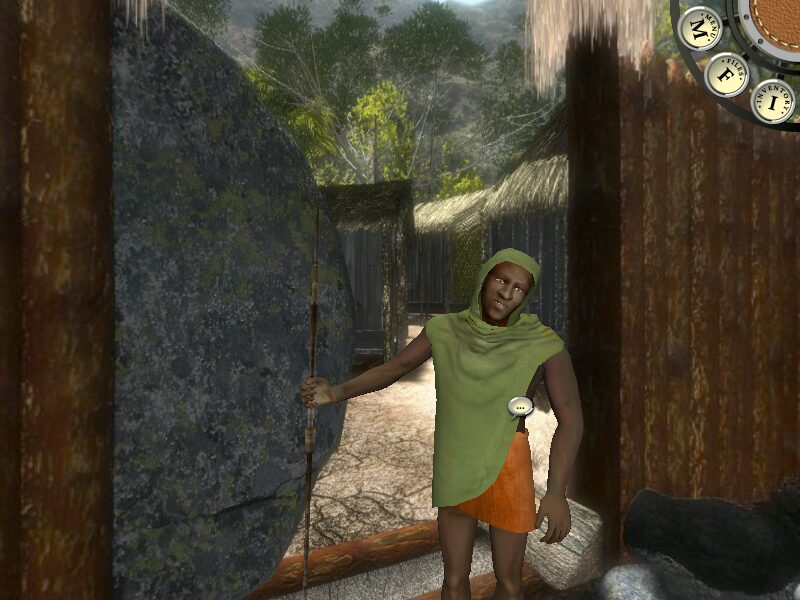Retro Replay Review
Gameplay
AGON: Episode 3 – Pirates of Madagascar retains the classic point-and-click interface that fans of the series have come to love. Players guide Professor Samuel Hunt through lush tropical environments, clicking to examine objects, collect clues, and solve intricate puzzles. The core mechanics remain intuitive, making it easy for newcomers to dive right in while still offering enough depth to challenge seasoned adventure gamers.
(HEY YOU!! We hope you enjoy! We try not to run ads. So basically, this is a very expensive hobby running this site. Please consider joining us for updates, forums, and more. Network w/ us to make some cash or friends while retro gaming, and you can win some free retro games for posting. Okay, carry on 👍)
One of the most notable enhancements in this chapter is the expanded conversation system. Non-player characters now boast longer dialogue trees with multiple branching options, allowing for richer exchanges. Choosing the right conversational path can unlock new leads, background lore, or even fun easter eggs that reward exploration. The tone of the dialogues is lighthearted, balancing historical tidbits about Madagascar with the playful banter that defines Professor Hunt’s character.
Puzzles in Pirates of Madagascar feel more integrated into the environment than in previous episodes. Instead of standalone riddles, you may find yourself assembling a pirate map from scattered fragments or deciphering ancient Malagasy symbols to open hidden compartments. This organic approach to puzzle design creates a stronger sense of immersion, as every challenge feels like a natural part of the story rather than a mechanical hurdle.
Additionally, exploration is encouraged through subtle hints and environmental cues. Should you ever feel stuck, the game offers a contextual hint system that highlights interactable areas without hand-holding. This respects the player’s intelligence while keeping frustration at bay. All in all, the gameplay loop of exploration, conversation, and puzzle-solving has been polished to near perfection in this third installment.
Graphics
Visually, Pirates of Madagascar marks a clear step forward for the AGON series. Backgrounds are rendered with a mix of pre-rendered art and 3D elements, resulting in vibrant jungle vistas, sun-baked beaches, and shadowy pirate caverns. The dynamic lighting effects, especially during dawn and dusk sequences, impart a realistic warmth to the scenery, making Madagascar’s tropical beauty shine through.
Character models have received a facelift as well. While retaining the slightly stylized aesthetic of earlier titles, Professor Hunt, local guides, and even fellow pirates exhibit more fluid animations and expressive facial features. Conversations feel more alive thanks to subtle lip synchronization and gesture work that give each NPC a distinct personality.
Cutscenes blend seamlessly with gameplay sections, utilizing fully animated sequences that spotlight key story moments. These short cinematic interludes enrich the narrative without dragging on, maintaining the series’ signature brisk pacing. The occasional use of particle effects—like drifting mist in a secret cave or sparks from a campfire—underscores the improved technical capabilities of this episode.
However, a few minor technical hiccups can arise on lower-end hardware. Texture pop-in may appear when rapidly panning the camera, and some shadows flicker during complex interior scenes. Thankfully, these issues are rare and do not significantly detract from the overall visual feast. In most settings, Pirates of Madagascar delivers a polished and vibrant presentation.
Story
After uncovering the mysterious second board game artifact at the close of AGON: Episode 2 – Adventures in Lapland, Professor Samuel Hunt’s journey leads him to the shores of Madagascar. Here, rumor has it that pirates once used the island’s unique geography to hide priceless relics linked to an ancient civilization. The setup immediately captures your imagination, blending real-world history with the series’ trademark sense of wonder.
The narrative unfolds through a series of well-paced chapters, each introducing new allies and adversaries. From resourceful island guides to elusive pirate descendants, every character you meet adds depth to the overarching mystery. Dialogue is peppered with cultural insights into Malagasy traditions, providing an educational layer that enriches the main plot without feeling like a forced history lesson.
The pacing strikes a welcome balance: you’ll breeze through scenic explorations of coastal settlements before delving into tense stealth sequences in crowded pirate taverns. Moments of levity—such as Hunt’s dry wit when stumbling over local superstitions—contrast nicely with more poignant reveals about lost treasures and secret societies. By the time you solve the final puzzle, the story feels both complete and ripe with suggestions for future adventures.
Another highlight is the way the game ties back to the series’ mythology. Clues unearthed here shed new light on earlier expeditions, encouraging long-time fans to revisit previous episodes for hidden parallels. Newcomers will still enjoy the standalone narrative, but those familiar with Professor Hunt’s earlier escapades gain an extra layer of satisfaction from these clever callbacks.
Overall Experience
AGON: Episode 3 – Pirates of Madagascar succeeds in offering a fully realized adventure that caters to both veterans of the series and newcomers alike. The game’s blend of challenging puzzles, enriched dialogue, and atmospheric visuals creates a compelling journey across one of the world’s most enigmatic islands. It strikes a perfect tone between casual exploration and satisfying detective work.
Replay value is elevated by multiple dialogue paths and optional side puzzles. If you’re a completionist, you’ll enjoy hunting down every hidden artifact and unlocking all conversation branches. Even if you prefer a more straightforward playthrough, the hint system ensures you can progress at a comfortable pace without missing key moments.
On the audio front, the soundtrack weaves traditional Malagasy rhythms with a nautical flair, immersing you further in the pirate theme. Voice acting remains solid, capturing the nuances of each character and lending emotional weight to important scenes. Sound effects—from the crash of waves on rocky outcrops to the crackle of a campfire—round out the sensory package beautifully.
Ultimately, Pirates of Madagascar stands as a high point in the AGON series. Its polished gameplay, enhanced graphics, engaging story, and thoughtful pacing make it an easy recommendation for anyone craving a smart, story-driven adventure. Whether you’re a longtime fan or a curious newcomer, this episode delivers a memorable voyage you won’t soon forget.
 Retro Replay Retro Replay gaming reviews, news, emulation, geek stuff and more!
Retro Replay Retro Replay gaming reviews, news, emulation, geek stuff and more!









Reviews
There are no reviews yet.